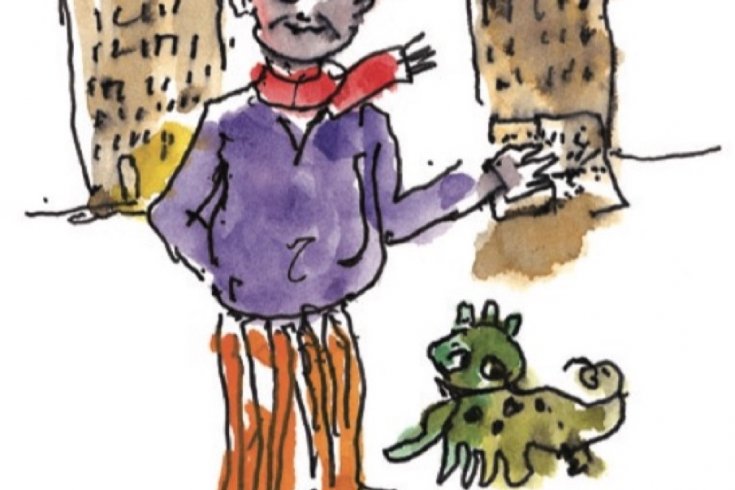
rome—At the end of the Via Urbana, just below the Santa Maria Maggiore church is, arguably, the ugliest building in Rome. It is squat, concrete, and grey, a paragon of the sixties-style office building. Dozens of buildings just like it can be found in most North American cities, but they are hard to come by in Rome. It is in this building that “International Recordings” has its studios, and it is here that a large number of Hollywood (and other) films get dubbed into Italian. Which is what brings me here: an amateur fascination with Italian dubbing.
The Italians dub everything. Theatrical movies are dubbed, television shows are dubbed, and even documentaries are dubbed. Other European countries dub as well, but not with the same kind of near-total exclusivity as Italy. The result is that finding a subtitled film here is almost impossible. Italian movie-goers are accustomed to this, and even those who are ambivalent about the merits of dubbing are prone to wax a little chauvinistic when speaking about the quality of their dubbing. As with food, fashion, and football, when it comes to dubbing, Italians believe they’re second to none.
“It began, I think, with Fascism,” Francesco Vairano says when I ask him about the origins of Italian dubbing. Vairano is one of the top three Italian dubbing directors. He is the man behind the Il Signore degli Anelli trilogy, Harry Potter I & II, E Alla Fine Arriva Polly, Hamlet, Shrek, American Beauty, Trainspotting, and many others. “Mussolini didn’t want to hear any foreign languages,” explains Vairano, “so we started dubbing.”
Vairano is in his fifties, physically distinguished by his round bald head, dark horn-rimmed glasses, and large, expressive eyes. He was originally a stage and television actor, and his manner retains an element of the theatrical. Vairano turned to dubbing in the early 1980s, first as an actor, then as a director and dialogue writer or “adapter” (i.e., script translator). On most of his projects he continues to write his own scripts and, occasionally, to act. Normally, it takes him two weeks to write a script – “though, of course, Hamlet took three weeks” – and another two weeks to dub the film. The work is done five days a week, with the days broken down into three discrete three-hour sessions beginning at 9:00 a.m. and ending at 7:30 p.m. Vairano says he does an average of ten films a year.
When I meet Vairano, he is close to completing his most recent project, Michael Winterbottom’s Code 46, starring Tim Robbins and Samantha Morton. This is performed at a dubbing studio which, like the rest of the building, could benefit from a renovation. The control room Francesco shares with the sound engineer is poorly ventilated, the computer equipment appears vaguely outdated and, unlike most North American post-production facilities, there are no complimentary soft drinks, chocolates, and jelly beans – in essence, nothing to divert your attention from the fact that filmmaking is a predominantly tedious and unglamorous activity. A slanted glass pane separates the control room from the dubbing studio where Angelo, who voices Tim Robbins, and Roberta, who voices an Asian lab technician, have their micro-phone, music stand, and large video- projection screen. Though neither actor speaks English, the scene they are set to dub is played once in its entirety with the original dialogue so that they can get a sense of the mood and the vocal rhythm.
“The actors have to listen not just to the sound, but to the psychology of the character,” Vairano says. “I want to feel emotions. If I don’t feel emotions, there is nothing.”
For the next hour, Vairano and the actors set about capturing the emotion of a minute-long exchange between Tim Robbins and the lab technician. The track is laid down not so much line by line, but word by word, and a failed enunciation or a swallowed syllable is invariably grounds for a retake. A common refrain in the control room is: Facciamone un’ altra (“Let’s do another take”). The work moves slowly and demands a meticulous attention to detail. Because, in fact, dubbing a scene has more in common with singing than with acting, which is to say: the actors are singers, the director is the conductor, and the original dialogue is the score, which they must reproduce as faithfully as possible, note by note. However, since Italian often requires a greater number of words than English to express an idea, the task of the dubber is further complicated by being forced to sing the same song, only with more notes. Ultimately, as with most things in art and life, perfection is unattainable but, if it is done well, the results can still be remarkably convincing.
By almost any estimation, a job in the Italian dubbing industry is desirable.
Though not as secure as it was several years ago, it still offers Italian actors and directors a level of stability unavailable in theatre, movies, and television. The one thing it doesn’t provide, however, is recognition and celebrity. In the late 1990s, some actors were still able to lay sole claim to particular Hollywood stars – the actor who voiced Woody Allen, the actress who voiced Julia Roberts, the actor who voiced Robert DeNiro, Al Pacino, and Sylvester Stallone – but today actors routinely voice any number of stars and therefore, to the average Italian moviegoer, are largely indistinguishable from one another. Even a director like Vairano, whose credit appears in some of the most successful films in Italy, remains effectively unknown. “My name doesn’t mean anything,” Vairano says with equanimity. The only time people get excited about him, he allows, is when they discover that he was the voice behind Gollum, the creepy, green homunculus from the Il Signore degli Anelli trilogy. “They ask me to do the Gollum voice,” Vairano says, “but I usually don’t.”




